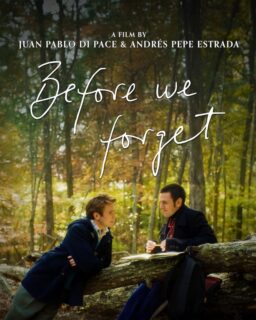Dear Agnes Varda. She is a great director and a beautiful, lovable and wise woman, through and through. It is not enough that she made some of the first films of the French New Wave. That she was the Muse for Jacques Demy. That she is a famed photographer and installation artist. That she directed the first appearances on film of Gerard Depardieu, Phillipe Noiret–and Harrison Ford! Or that after gaining distinction as a director of fiction, she showed herself equally gifted as a director of documentaries. And that she still lives, as she has since the 1950s, in the rooms opening off each side of a once-ruined Paris courtyard, each room a separate domain.
That is not enough, because her greatest triumph is her life itself. She comes walking toward us on the sand in the first shot of “The Beaches of Agnes,” describing herself as “a little old lady, pleasantly plump.” Well, she isn’t tall. But somehow she isn’t old. She made this film in her 80th year, and she looks remarkably similar to 1967, when she brought a film to the Chicago Film Festival. Or the night I had dinner with her, Jacques and Pauline Kael at Cannes 1976. Or when she was at Montreal 1988. Or the sun-blessed afternoon when we three had lunch in their courtyard in 1990. Or when she was on the jury at Cannes 2005.
Her face is still framed by a cap of shining hair. Her eyes are still merry and curious. She is still brimming with energy, and in “The Beaches of Agnes” you will see her setting up shots involving mirrors on the beach, or operating her own camera, or sailing a boat single-handedly down the Seine under the Pont Neuf, her favorite bridge. And she has given us the most poetic shot about the cinema I have ever seen, where two old fishermen, who were young when she first filmed them, watch themselves on a screen. Yes, and the screen and the 16mm projector itself are both mounted on an old market cart that they push through the nighttime streets of their village.
If you are lucky you have seen her features like “Cléo from 5 to 7,” or “Vagabond” or “Les Creatures,” or “One Sings, the Other Doesn't” or “Kung-fu master!.” Her documentaries like the one filmed all on her street, “Daguerreotypes,” or her sympathetic look at scavengers in “The Gleaners and I“. Or the lovely film of Demy’s life that he wrote and she filmed, completing it 10 days before his death “Jacquot.”
Sailing on the Seine
But if you have not seen a single film by Agnes Varda, perhaps it is best if you start with “The Beaches of Agnes.” You don’t need to know anything about her work. She has a way of never explaining very much, and yet somehow making it all clear. She does this by not treating her life as a lesson in biography, but as the treasured memories of friends.
This is not an autobiography, although it is about her lifetime. She closes it by saying, “I am alive, and I remember.” The film is her memories, evoked by footage from her films, and visits to the places and people she filmed. But that makes it sound too straightforward. The film is a poem, a song, a celebration. Although she is in robust good health, she accepts, as she must, that she is approaching the end, and je ne regrette rien. She expresses no thoughts about an afterlife, and only one great regret about this one: That Jacques and she could not complete the journey together, as they had planned. This is a great, loving, uplifting film. It provides an ideal of a life well-lived.
If she had only been a photographer, Varda would have been a great one, with her work in China, Cuba, Europe, America. As an installation artist, regard the “house of cinema” she constructed by hanging hundreds of long film strips from a framework so the sun shining through them would define the space inside. She stands within this space, the light playing on her, and says, “I have lived my life in the cinema.” Or if that is too theoretical for you, consider her installation about potatoes, with Agnes herself as an advertisement, walking the sidewalk inside a big potato.
For “Jacques,” Varda built a beach set on the rue Daguerre in front of their home.
She doubts she had seen 10 films by the time she was 25, when she made her first film, “La Pointe-Courte” (1954). That’s the one with the fishermen she went to visit again. “I thought if I added sound to photographs, that would be cinema,” she says, adding that she had a lot to learn. She had no theory, and never desired any theory. She filmed as she felt, even in this first work that boldly brings together two story lines. Its visual compositions are compared to Bergman’s in an enormously useful IMDb user comment. It starred the great actor Phillip Noiret in his first role. Coming before the first films of Godard, Truffaut, Chabrol, Demy, Rivette and Resnais (who was her editor) , it could have a claim to be the founding film of the New Wave, unless Jean-Pierre Melville should be considered. Perhaps that’s why Varda is sometimes called the grandmother, not the mother, of the New Wave.
She made five short films between 1954 and 1961, before starting “Cléo from 5 to 7,” the first feature that gained wide attention. Her friend Jean-Luc Godard had experienced enormous success with “Breathless,” sometimes described as the first New Wave film. His producer asked him to recommend someone else “like him,” who could make a low-budget black and white film that would tap the same market. He recommended Varda.
The film’s title refers to the afternoon hours when French married people meet their lovers, but Cleo (Corinne Marchand) is not simply a lover. She is a singer who fears she’s dying of cancer, and we follow her as she passes time waiting for the result of a biopsy. The film achieved much notice for the way it photographed Cleo on real streets and in real shops with real people; what is remarkable is that Varda achieved this not with a hand-held documentary look but with elegantly composed and edited shots that revealed her compositional background as a photographer.
Varda and Indian actress Nandita Das on the jury at the Cannes Film Festival in 2005
I first became aware of her at my first Chicago Film Festival, in 1967, where she showed the documentary “Uncle Janco.” It involved an uncle who was a painter and lived on a houseboat in San Francisco, and one reason I remember it so clearly is that she made Janco and his life so vividly human. He isn’t seen as a character or an anecdote, but as a man who has built the life he wanted to, and lives within it.
I will not go through the Varda films I’ve seen one by one; but there are a few I must mention. “Daguerreotypes” (1976) is one she filmed literally outside her front door. She lives on rue Daguerre in Montparnasse. Let me describe her home, office, work space and headquarters. A big double gate opens from the street. Inside is a former alleyway, still wide enough for a small car, with two-story rooms on either side. I’m not sure what it was once used for–flats above, perhaps, and small shops below. There’s a scene showing the space as Varda first saw it, no water, no heat, no toilets, the courtyard jammed with junk. Each two-story unit was separate, and Varda and Demy mostly kept them that way. You have to go outside to get from one to another.
One unit was Varda’s, one Demy’s, one theirs together, one for their daughter Rosalie, one for their son Mathieu, offices for Demy and Varda, art studios, darkrooms, editing rooms, and so on. Confined yet spacious. Spartan luxury. You can open a window and call out to another room. The spaces are filled with art and fabrics of bright colors, the courtyard lined with trees and flowers. There is a family-sized table for outdoor meals in good weather. You will see the home in the film, but she doesn’t give you a tour and you may not be able to tell how original and comfortable it us. In this home every notable figure in the world of French film, and countless from elsewhere, and many not notable figures, and countless new friends, have come calling for more than 60 years. Not too far away is La Coupole, the famous restaurant where French painters paid for their supper in the late 1920s by painting the interior columns. If Varda and Demy had established a similar policy, the rue Daguerre film collection would not rival the Cinematheque Francais, but it would make the Museum of Modern Art green with envy.
Agnes, her children and her grandchildren dancing on the beach in 2008
To make her charming and compassionate documentary, Varda simply filmed her neighbors. In the 1970s, they were small shopkeepers and trades people. Today, I fear, it is tres chic, and the film preserves an earlier time in Paris. There was the baker and his wife. A butcher, expertly slicing steaks “not too thick” for one customer, “not too thin” for another. An accordion player, a laundress and, most memorable of all, a very old couple who ran a shop selling perfumes and buttons. Buttons and perfume? Yes, the old man says. He mixes the perfumes himself. And, should a customer also happen to require a button–voila!
In “The Beaches of Agnes,” Varda explains that she promised the neighbors to use her own electricity to power her camera and lights. This she did by stringing a 90m cable through her mail slot. That was her umbilical. Everyone she filmed was less than 90 metres away. She still has the cable. There is a shot of it being pulled back through the mail slot at night. Doesn’t your knowledge of that cable (never mentioned in “Daguerreotypes”) make it almost necessary for you to see the film?
For Varda, film has been a family business. Demy of course is most famous for “The Umbrellas of Cherbourg,” the all-singing musical which won the Palme d’Or at Cannes. Varda’s “Vagabond” won the Golden Lion at Venice. They supported each other when needed, but kept a “respectful” distance from each other’s work. Their great collaboration came at the end, when Demy started to write down memories of his youth in Nantes, and Agnes said, “Jacques, do you want me to make a film of these?” Jacques said he did, and Agnes began immediately, that very day.
Agnes and Jacques
Calling on friends and collaborators, she started to film with Demy at her side and everyone aware that he was dying. It was a period piece, with actors playing young Demy and the others. “Jacques” was finished with a few days to spare. She must have had a personal agenda for beginning work so quickly; right to the end of his life, Demy was needed. There is no use in waiting passively to die. There could be no better demonstration of Werner Herzog’s vow that if he knew the world was ending tomorrow, he would begin another film.
Varda has worked frequently with her children. Rosalie has been an actress and costume designer for her mother. Mathieu is an actor who has appeared in 46 films, but his first significant role was in “Kung-fu master!” (1988), Varda’s daring balancing act about a tentative romance between a 14 year old boy and the mother (Jane Birkin) of two of his friends. This story, written by Birkin and Varda, sounds undoable. It is surprisingly gentle, sweet–and funny. Kind of a miracle.
In “The Beaches of Agnes,” there is a sequence in which all of her children and grandchildren, dressed in white, perform a slow ballet on the beach, and Varda dances behind them, dressed all in black. And that’s all I need to say about that. Many times when we see her in the film, she is walking backwards, as the film itself walks backwards through her life, and as she perhaps sees herself receding from our view. But her films will not recede, and neither will Varda. There is absolutely no hint to suggest this is her last film.
 At Illinois I had a class that made a great impression on me, taught by the famous critic Sherman Paul, about the organic tradition in literature. As models he held up such as Emerson, Thoreau, Louis Sullivan, Edmund Wilson, William Carlos Williams. These men, he said, created as a part of their lives, not as a separate cerebral activity. My professor would have approved of Varda. She never studied film. She never moved in circles with Sartre, Beauvoir and other cafe philosophers who measured out their lives with coffee spoons. She simply went to work, doing what felt right to her, filming, photographing and designing what came to hand. For her there is no distinction between fiction and documentary, for they are both ways of observing and feeling.
At Illinois I had a class that made a great impression on me, taught by the famous critic Sherman Paul, about the organic tradition in literature. As models he held up such as Emerson, Thoreau, Louis Sullivan, Edmund Wilson, William Carlos Williams. These men, he said, created as a part of their lives, not as a separate cerebral activity. My professor would have approved of Varda. She never studied film. She never moved in circles with Sartre, Beauvoir and other cafe philosophers who measured out their lives with coffee spoons. She simply went to work, doing what felt right to her, filming, photographing and designing what came to hand. For her there is no distinction between fiction and documentary, for they are both ways of observing and feeling.
The film most central to her life in many ways is “The Gleaners and I,” where she ennobles a trade she traces back to the middle ages: The trade of moving through the places of Man and rescuing those things that can usefully be used again. When I see men moving down our alley with grocery carts, searching garbage bins for items of value, I do not think of the words homeless, mendicants, vagrants. Having been taught by Varda, I think gleaners. They have a life to live and a living to make, and are of greater actual use to society than some who make millions a year.
In that way all of Varda’s films have been gleanings. Although she is happy when one of them is successful (“Vagabond” was a big hit,” she recalls cheerfully), I don’t believe a single one was made because of its commercial prospects. They were made out of love of the art form, and constructed by what fell to hand and seemed good to her. And now at 80 she can walk backwards with more serenity than most of us, because she will not stumble.
“The Beaches of Agnes” is rated “four stars.” It is playing at 3 p.m. Sunday, March 1 and 6 p.m. Thursday, March 5 at the Gene Siskel Film Center. The film, with Varda sometimes introducing it, will be playing in many North American cities, including Berkeley, Minneapolis, New York and Cambridge; for information, here is the Google search.
[Monday, March 2: The French Union of Film Critics has chosen chose “The Beaches of Agnes” as best French film of the year. Foreign went to “There Will be Blood” which was a 2008 release in France. Last Friday night, the Varda film won “Best Documentary” from the Academy des Cesars (the “French Oscars”).
From “The Beaches of Agnes,” including her overview of her films:
Cleo wanders the Paris streets:
Varda’s Keatonesque 1961 silent short subject “Les Fiances du Pont Mac Donald,” starring Jean-Luc Godard and Anna Karina:
“The Gleaners and I” (in French):

















